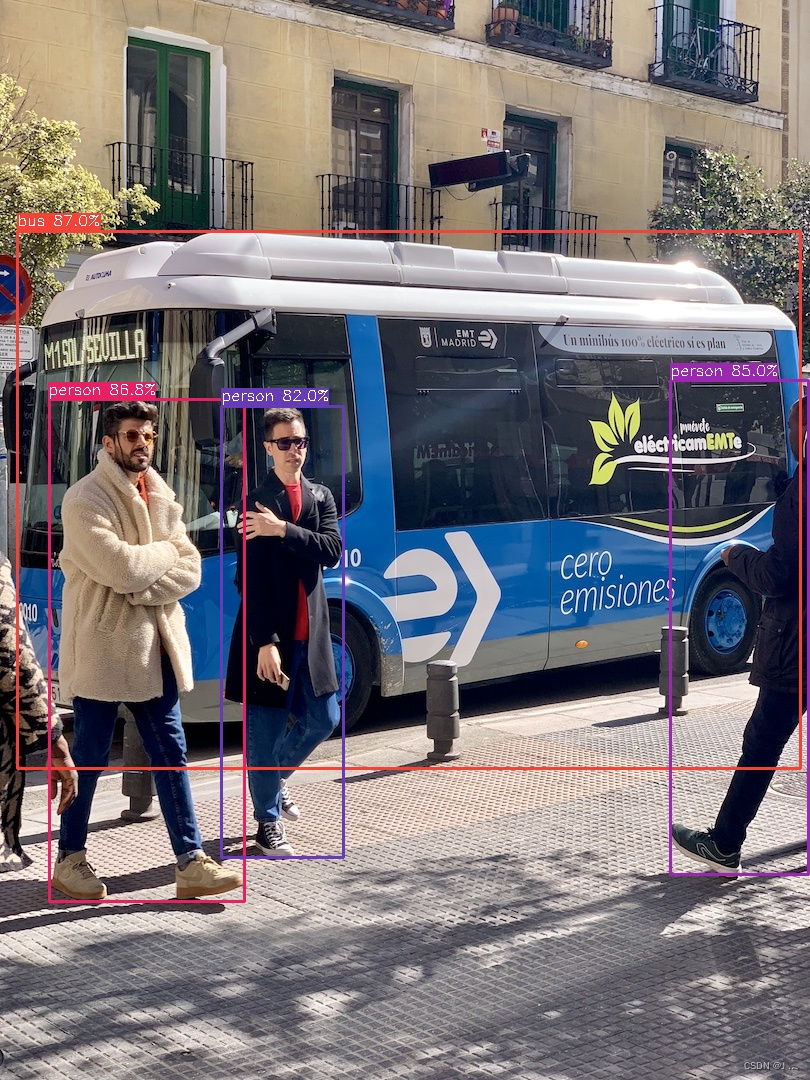记录下 基于 ncnn 实现 yolov8 的全部过程
- 修改 ultralytics/nn/modules.py
class Detect forward和class C2f forwardclass Detect(nn.Module): ... def forward(self, x): shape = x[0].shape # BCHW for i in range(self.nl): x[i] = torch.cat((self.cv2[i](x[i]), self.cv3[i](x[i])), 1) if self.training: return x elif self.dynamic or self.shape != shape: self.anchors, self.strides = (x.transpose(0, 1) for x in make_anchors(x, self.stride, 0.5)) self.shape = shape # x_cat = torch.cat([xi.view(shape[0], self.no, -1) for xi in x], 2) # if self.export and self.format in ('saved_model', 'pb', 'tflite', 'edgetpu', 'tfjs'): # avoid TF FlexSplitV ops # box = x_cat[:, :self.reg_max * 4] # cls = x_cat[:, self.reg_max * 4:] # else: # box, cls = x_cat.split((self.reg_max * 4, self.nc), 1) # dbox = dist2bbox(self.dfl(box), self.anchors.unsqueeze(0), xywh=True, dim=1) * self.strides # y = torch.cat((dbox, cls.sigmoid()), 1) # return y if self.export else (y, x) pred = torch.cat([xi.view(shape[0], self.no, -1) for xi in x], 2).permute(0, 2, 1) return pred class C2f(nn.Module): export = False # export mode # CSP Bottleneck with 2 convolutions def __init__(self, c1, c2, n=1, shortcut=False, g=1, e=0.5): # ch_in, ch_out, number, shortcut, groups, expansion super().__init__() self.c = int(c2 * e) # hidden channels self.cv1 = Conv(c1, 2 * self.c, 1, 1) self.cv2 = Conv((2 + n) * self.c, c2, 1) # optional act=FReLU(c2) self.m = nn.ModuleList(Bottleneck(self.c, self.c, shortcut, g, k=((3, 3), (3, 3)), e=1.0) for _ in range(n)) def forward(self, x): if not self.export: y = list(self.cv1(x).chunk(2, 1)) y.extend(m(y[-1]) for m in self.m) return self.cv2(torch.cat(y, 1)) x = self.cv1(x) x = [x, x[:, self.c:, ...]] x.extend(m(x[-1]) for m in self.m) x.pop(1) return self.cv2(torch.cat(x, 1)) def forward_split(self, x): if not self.export: print("------------> c2f forward_split:") y = list(self.cv1(x).split((self.c, self.c), 1)) y.extend(m(y[-1]) for m in self.m) return self.cv2(torch.cat(y, 1)) x = self.cv1(x) x = [x, x[:, self.c:, ...]] x.extend(m(x[-1]) for m in self.m) x.pop(1) return self.cv2(torch.cat(x, 1)) - 生成 onnx, 创建
export.pyfrom ultralytics import YOLO # load yolov8 segment model model = YOLO("yolov8n.pt") # Use the model success = model.export(format="onnx", opset=13, simplify=True) - 导出 ncnn 模型
./onnx2ncnn models/yolov8n.onnx models/yolov8n.param models/yolov8n.bin ./ncnnoptimize models/yolov8n.param models/yolov8n.bin models/yolov8n-opt.param models/yolov8n-opt.bin 65536 - 测试参考 https://github.com/FeiGeChuanShu/ncnn-android-yolov8
Q&A
-
Shape not supported yet!
修改 modules.pyclass detect和class c2f -
./ncnnoptimize models/yolov8n.param models/yolov8n.bin models/yolov8n-opt.param models/yolov8n-opt.bin 65536报错
尝试通过网上在线方式转换 fp16, 成功了。但使用ncnn 加载模型总是报错。在网上一顿找,各位大佬都验证好用,到我这就怎么转都报错,很是苦逼。后来索性换了个yolov8版本,结果好使了,麻蛋的。# 其实警告已经表示 该版本不支持 onnx exported. 没注意,以为无伤大雅了。 Results saved to /home/qh/workspace/train/ultralytics-v8 Predict: yolo task=detect mode=predict model=yolov8n.onnx -WARNING ⚠️ not yet supported for YOLOv8 exported models Validate: yolo task=detect mode=val model=yolov8n.onnx -WARNING ⚠️ not yet supported for YOLOv8 exported models

